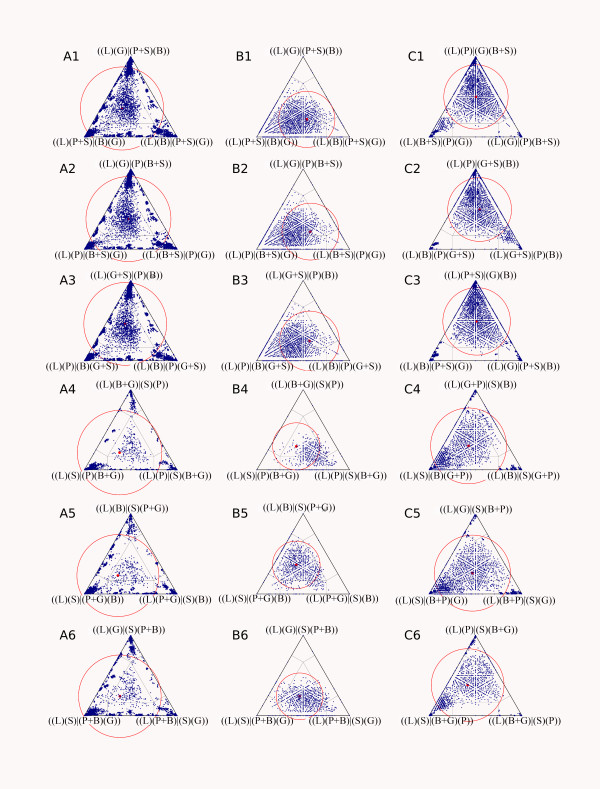Figure 7.
Visualizing phylogenetic structure of alignments via quartet mapping (Nieselt-Struwe and von Haeseler, 2001). Dots in a corner of a triangle represent high support for only one of the three topologies that can be constructed for a quartet of taxa. Dots in the centre represent a star-like topology, and the rest of the triangle stands for intermediate situations. Red circles indicate placement of the mean fraction of points. In all cases the majority of quartets are near the star-tree region, indicating little or no phylogenetic signal. The studied combinations are: A1–6: Original alignment of Giribet et al. (2006) with all characters. B1–6: Same alignment after exclusion of columns with gaps or missing data. C1–6: Same alignment after masking with the ALISCORE approach. For each alignment, the association of Laevipilina with all six possible variants of pairs of higher mollusc taxa were examined (see text). B = Bivalvia, G = Gastropoda, L = Laevipilina, P = Polyplacophora, S = Scaphopoda.

